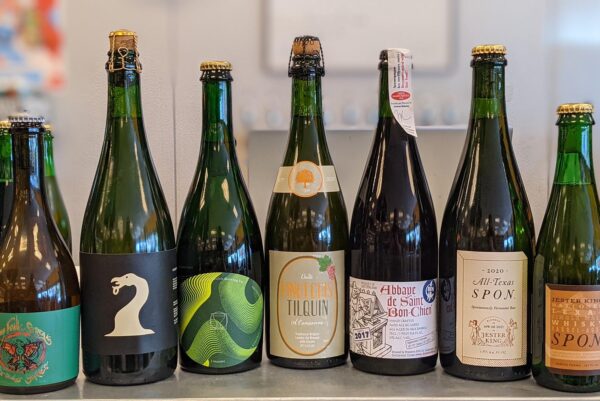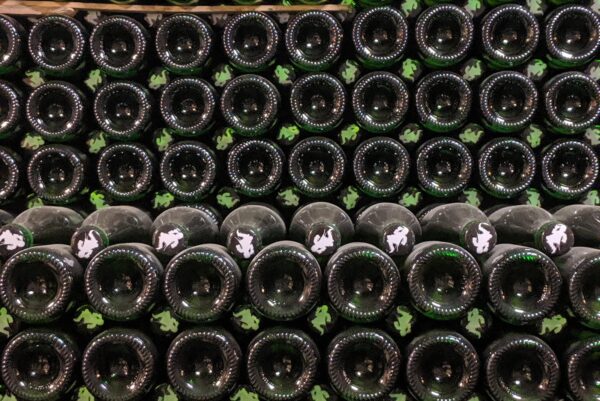
This sponsored column is written by Todd Himes, beermonger at Arrowine (4508 Lee Highway). Sign up for the email newsletter and receive exclusive discounts and offers. Order from Arrowine’s expanding online store for curbside pickup.
“Aroma of skunk, musty, can be similar to burned rubber or cat musk.”
That definition of the lightstruck off-flavors in beer comes directly out of the Cicerone study resources.
But what is lightstruck beer? When certain hop compounds react to UV light, they create 3-methyl-2-butene-1-thiol, or MBT, which you may know as the culprit behind that odorous character often found in some “top-shelf” imported lagers — or late nights on some dark country roads.
Brown glass bottles would filter out most of that UV light where green and clear bottles would let UV wavelengths pass through with greater ease and thus green and clear bottles received a reputation for “ruining” many a beer and changing the flavor of what its brewers would have intended.
For years I bought into that — it even became one of the tenets of my strong support for putting more beer into cans. If some light was bad why not eliminate all light? Somewhere along the way, though, I’ve been introduced to thinking those green bottles unfairly got a bad rap.
Many of my favorite Belgian breweries have been bottling their beers in green glass for longer than I’ve certainly been drinking them. Even after I’d learned the hardline “green is bad,” I longed to try the lambics of Cantillon, Drie Fonteinen and Boon, all of which were shipped across the sea in verdant vessels.
The first Belgian in green that crossed my lips was Saison Dupont. Upon uncorking that bottle, I was struck by the aromas that were decidedly “farmy” before farmhouse ales were truly on my radar. But nowhere was I thinking about skunks or tire fires, just-cut hay, horse stalls and dank grasses. Saison and lambics became some of my favorite styles, and I even saw a noble art in what I saw as the unknown and unpredictable effects of wild yeasts, spontaneous fermentation and wood aging.
Despite being a popular way of packaging these types of beers in Europe, here in the United States, the classic brown bottles prevailed even as more breweries were experimenting with old traditions in brewing.
That changed and much of the credit is given to Jester King in Austin, Texas, when in 2016, they began packaging some of their mainstay beers in green glass bottles for sale in their tasting room. The bottles that were destined to leave their gorgeous property were still being packaged in brown glass. (Full disclosure: Jester King’s brewery is quite possibly my favorite place in the world and that was before I got married there in 2019.)
Head brewer at the time, Garrett Crowell, stated in a blog post on Jester King’s website: “While green bottles permit the risk of light struck/skunky character, I feel they add character, even beyond skunkiness.”
He went on to say, “Pasteurized, shelf-stable beer has dumbed down beer consumers into believing that something will still taste fresh after leaving it in the trunk of their car, or in the sun, etc. Hopefully, green bottles will emphasize that our beer is a living thing, and that the way it’s treated will significantly alter the experience one can have with it.”
Fast forward to now and there are a large number of beers packaged in green glass bottles on our shelves here at Arrowine. Some like Tilquin Gueuze or Abbaye de Saint Bon-Chien have come from far away, but others have traveled far less distance to be here, including new bottles from Benchtop, Commonwealth and Pen Druid, all located here in Virginia.



